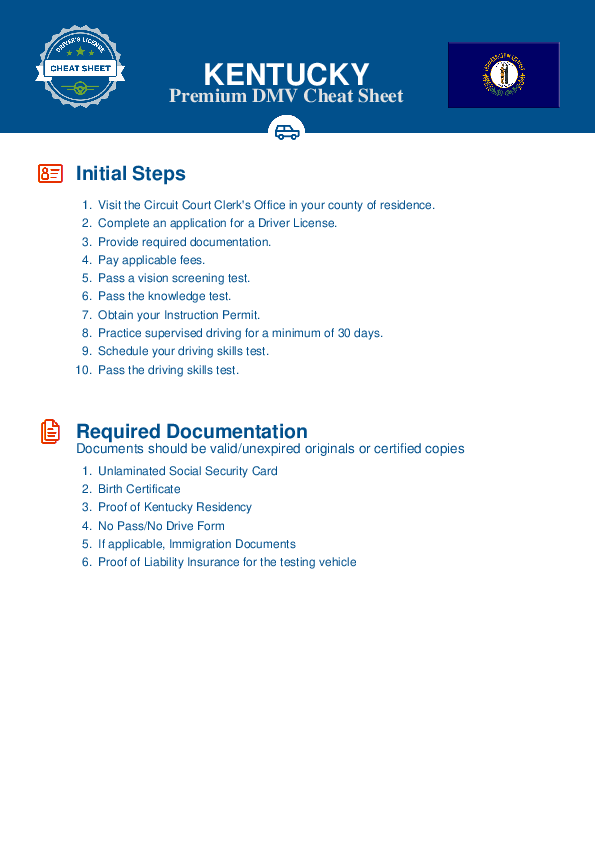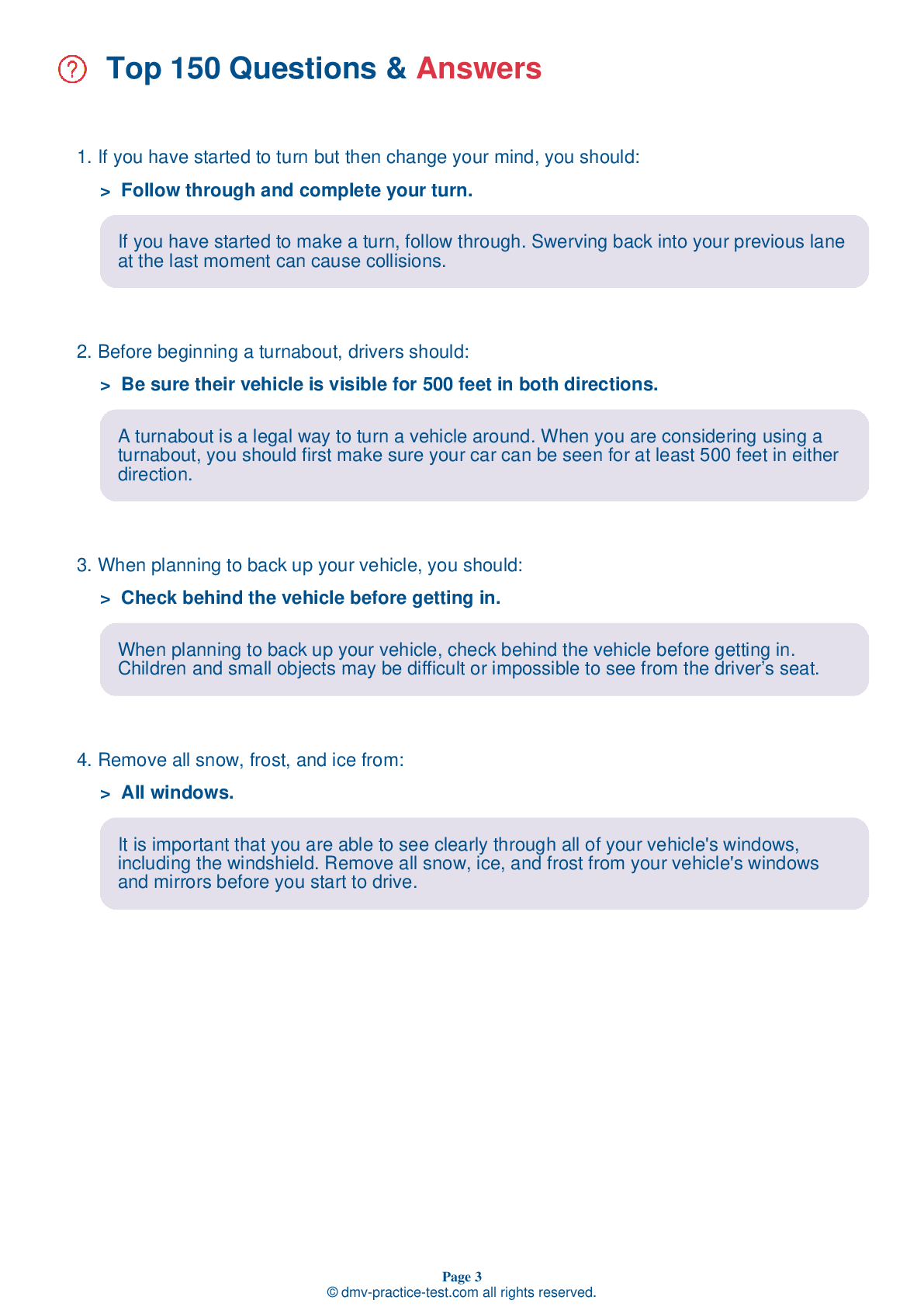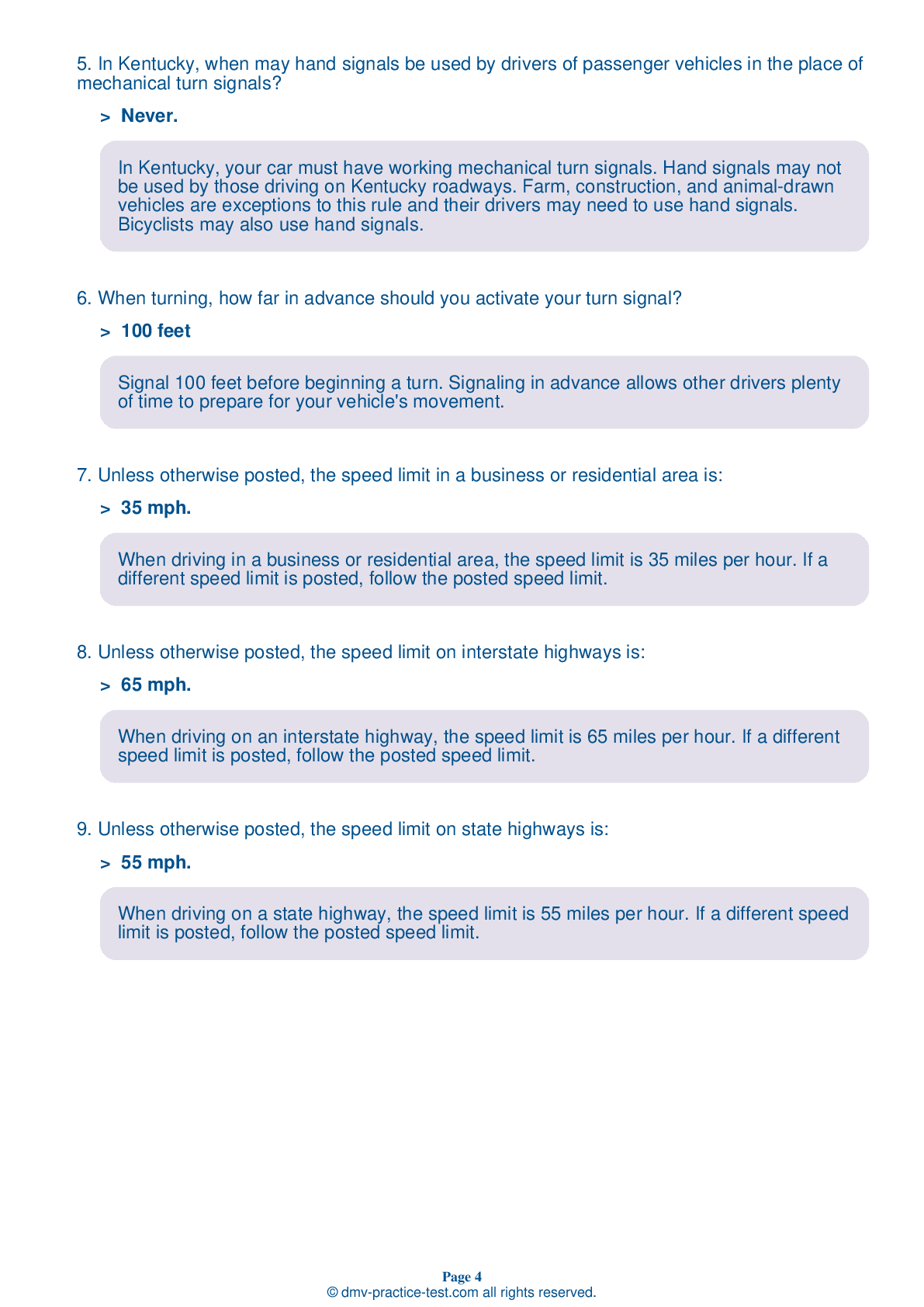FREE Kentucky DMV Practice Test #18
The DMV practise tests in Kentucky have been updated for January 2025. It comprises questions based on the most important traffic signals and laws for 2025 from the KentuckyDriver Handbook. To study for the DMV driving permit test and driver's licence exam, use actual questions that are very similar (often identical!) to the DMV driving permit test and driver's licence exam.
Each question on the practise exam has a tip and explanation to help you recall the ideas. Questions about traffic rules, traffic signs, and driving statutes, as well as knowledge from the Driver Handbook, will be included in the written portion of the official Kentucky DMV test.
You must properly answer 32 of the 40 questions to receive a passing mark. To help you prepare for your Kentucky instruction permit or driver's licence, take our DMV practise test.
The DMV exam is offered in a variety of languages.
Using any form of testing help will result in an automatic fail, and the DMV may take further action against your driver's licence, so avoid it.
1 . In traffic moving at 50 to 55 mph, you are least likely to have an accident if you:
You should adjust your speed to travel smoothly with the other traffic on a roadway (provided that the other traffic is driving within the posted speed limits). Remember that vehicles moving in the same direction at the same speed cannot hit each other. Crashes involving multiple vehicles often happen when some vehicles are traveling at different speeds than others.
2 . When approaching an intersection with a flashing red light, you must:
A flashing red traffic light means the same thing as a stop sign. When arriving at an intersection with a flashing red light, you must come to a full stop and proceed when it is safe to do so.
3 . You should always travel:
The speed at which you should drive your vehicle depends on road conditions, the weather, and the legal speed limit. You may never drive above the legal speed limit. Decrease your speed when anything makes conditions less than ideal.
4 . When should you yield your legal right-of-way?
Never assume other drivers will give you the right-of-way. Yield your right-of-way whenever it helps prevent collisions.
5 . When a pedestrian guided by a dog or carrying a white cane is crossing the street:
Blind or partially blind pedestrians may carry a white cane or use the assistance of a guide dog. You must always yield the right-of-way to a pedestrian who is using a guide dog or carrying a white cane.
6 . At an intersection with stop signs on all corners, yield the right-of-way to any driver:
After coming to a full stop, vehicles should proceed through a four-way stop in the order in which they arrive to the intersection. If multiple vehicles arrive at the same time, the vehicle on the left must yield the right-of-way to the vehicle on the right.
7 . If weather or light conditions require you to have your lights on while driving:
Use your low beam headlights when driving in foggy, snowy, or rainy conditions. Light from high beam headlights will reflect back, causing glare and making it even more difficult to see ahead.
8 . In which of the following scenarios should your wheels not be pointed straight ahead?
While waiting to turn left, keep your wheels pointed straight ahead until it is safe to start your turn. If a vehicle hits you from behind, this will prevent you from veering into oncoming traffic. When parked facing either uphill or downhill, turn the wheels so the vehicle will not roll into traffic if the brakes fail.
Need Car Insurance? No problem!
Compare the best rates in Kentucky and find a personalized policy that meets your needs.
1. Are You Currently insured ?
2. Married ?
3. Do you own your Home?
4. Do you have more than 1 car ?
5. Have you or a Family Member Honorably Served in U.S. Military ?
6. Your Name
7. Age
8. Zip code
IMPORTANT REMINDER:Auto Insurance is Mandatory to drive in Kentucky. Get covered before you hit the road to avoid any fines.
Ranked by best match



